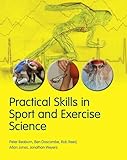Practical skills in sports and exercise science / Rob Reed ... [et al.].
Material type: TextPublication details: San Francisco, Calif. : Benjamin Cummings ; London : Pearson Education [distributor], 2011.Description: 540 p. ; 28 cmISBN:
TextPublication details: San Francisco, Calif. : Benjamin Cummings ; London : Pearson Education [distributor], 2011.Description: 540 p. ; 28 cmISBN: - 9781408203774 (pbk.) :
- 9781408203774 (pbk.)
- 613.71 DAS
- GV558
| Item type | Current library | Call number | Copy number | Status | Date due | Barcode | |
|---|---|---|---|---|---|---|---|
| Long Loan | TUS: Midlands, Main Library Athlone General Lending | 613.71 DAS (Browse shelf(Opens below)) | 1 | Available | 00214569 | ||
| Long Loan | TUS: Midlands, Main Library Athlone General Lending | 613.71 DAS (Browse shelf(Opens below)) | 1 | Available | 00214568 |
Study and examination skills -- 1.The importance of transferable skills -- 2.Managing your time -- 3.Working with others -- 4.Taking notes from lectures and texts -- 5.Learning and revising -- 6.Curriculum options, assessment and exams -- 7.Preparing your curriculum vitae or reþsumeþeþ -- Information technology and library resources -- 8.Finding and citing published information -- 9.Evaluating information -- 10.Using online resources -- 11.Using spreadsheets --- 12.Word processors, databases and other packages -- Communicating information -- 13.Reporting and interpreting test results -- 14.General aspects of scientific writing -- 15.Writing essays and literature reviews -- 16.Organising a poster display -- 17.Giving a spoken presentation -- The investigative approach -- 18.The principles of measurement -- 19.Making valid and reliable measurements -- 20.SI units and their use -- 21.Scientific method and design of experiments -- 22.Conducting and writing up project work -- Fundamental laboratory techniques -- 23.Your approach to practical work -- 24.Health and safety -- 25.Working with body fluids -- 26.Pre-exercise screening -- 26.Preparing for fitness testing -- 27.Pre-exercise healt screening procedures -- Basic laboratory procedures -- 28.Blood and urine collection and analysis -- 29.Measuring cardiac function -- 30.Testing pulmonary function -- 31.Measuring endurance exercise intensity -- 32.Measuring hydration status and body temperature -- 33.Measuring flexibility -- 34.Kinanthropometry --35.Measuring body composition -- Measuring physiological capacities -- 36.Measuring maximal aerobic capacity -- 37.Indirect mesaures of aerobic capacity -- 38.Measuring energy expenditure and physical activity -- 39.Measuring anaerobic power and capacity -- 40.Measuring muscle strength and endurance -- 41.Common field tests -- 42.Specific field tests -- Calculating physiological measures -- 43.Measuring endurance training thresholds -- 44.Meauring economy of exercise -- 45.Monitoring training load -- Analysis and presentation of data -- 46.Manipulating and transforming raw data -- 47.Graphs -- 48.Presenting data in tables -- 49.Descriptive statistics -- 50.Choosing and using statistical tests -- 51.Statistics for sports and exercise science.
This volume begins by examining the key transferable, general study skills students in the sciences need to master before presenting laboratory/practical skills required by the sports/exercise scientist and the theory which underpins them.
